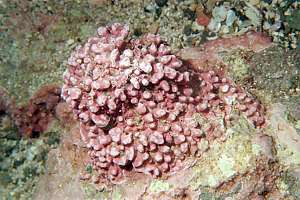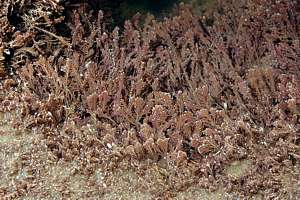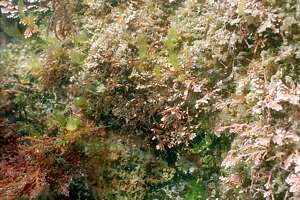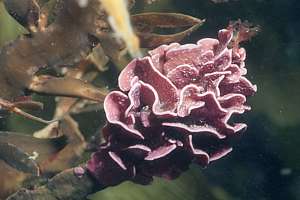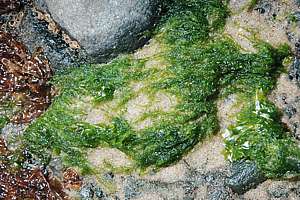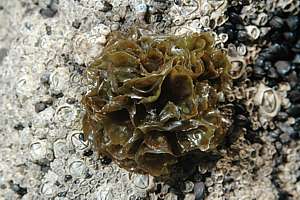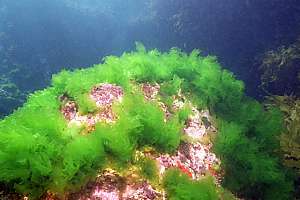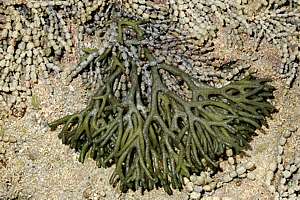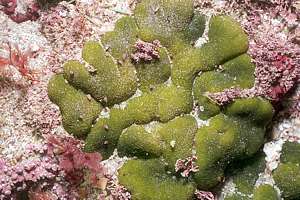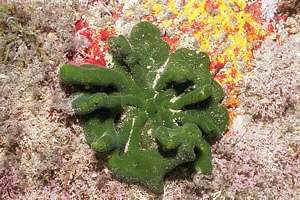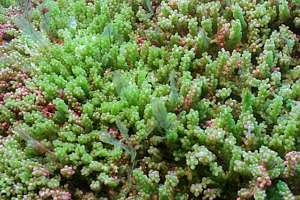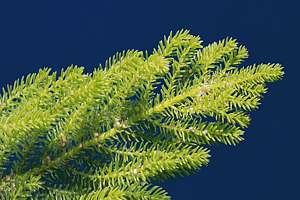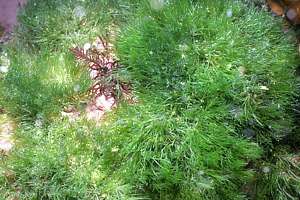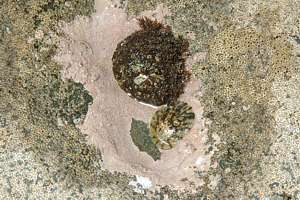 0609107: two radiate limpets in a tiny rock pool. The pink
patch shows where the pool is, as pink paint (Lithothamnion sp),
a coralline encrusting alga, grows best under water. Note how the smallest
limpet has left its homing spot, where it always returns to sleep. Because
it shades the pink paint, a bare patch results. The pink paint is barren
because it is grazed meticulously by the limpets who need someone else
to do their backs.
0609107: two radiate limpets in a tiny rock pool. The pink
patch shows where the pool is, as pink paint (Lithothamnion sp),
a coralline encrusting alga, grows best under water. Note how the smallest
limpet has left its homing spot, where it always returns to sleep. Because
it shades the pink paint, a bare patch results. The pink paint is barren
because it is grazed meticulously by the limpets who need someone else
to do their backs. |
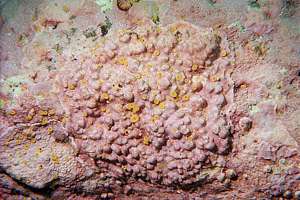 f019010: on this patch of rock one can clearly sea the various
'leaves' of pink paint, but each leaf is a separate plant. The biggest
leaf is lumpy. Yellow boring sponge colonies
(Clione cellata) have
drilled their way through the calcareous pink paint.
f019010: on this patch of rock one can clearly sea the various
'leaves' of pink paint, but each leaf is a separate plant. The biggest
leaf is lumpy. Yellow boring sponge colonies
(Clione cellata) have
drilled their way through the calcareous pink paint. |




